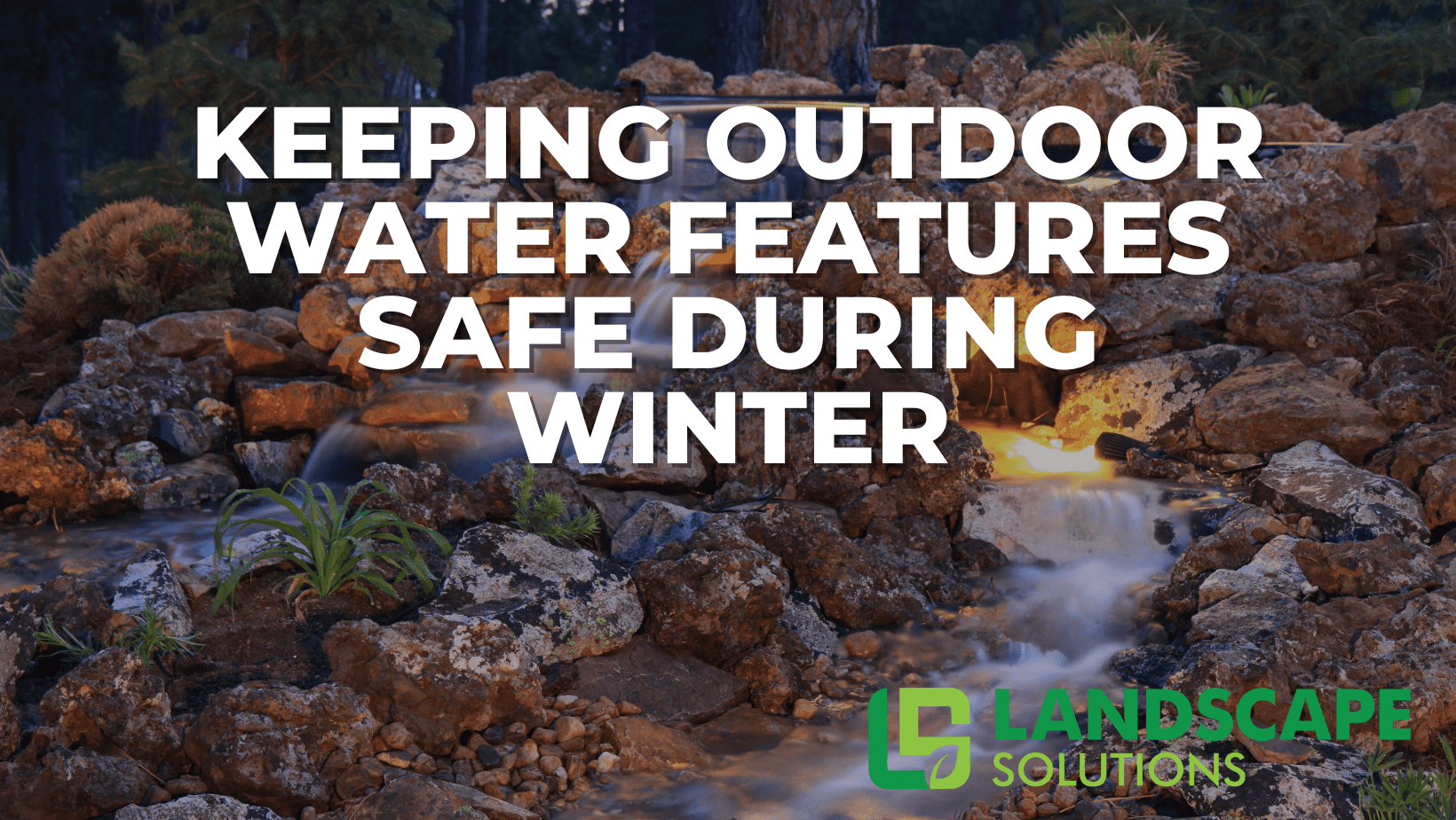
Outdoor water features like fountains, ponds, and waterfalls add tranquility and beauty to any landscape. However, as winter approaches, freezing temperatures can pose a serious threat to these features. Ice expansion can crack basins, damage pumps, and lead to costly repairs. Proper winterization ensures your water feature remains safe and functional when spring arrives. Here’s a comprehensive guide to safeguarding your outdoor water features during the colder months.
1. Drain the Water Thoroughly
One of the most critical steps in protecting your water feature is draining all water. When temperatures drop below freezing, water expands as it turns to ice, which can lead to cracks in the basin and other components.
– How to Drain: Use a pump or siphon to remove water from fountains, ponds, or other features. Make sure to empty every crevice and standing water in pipes or hoses.
– Clean the Basin: After draining, clean the basin using a mild bleach solution (1 teaspoon of bleach per gallon of water) to remove algae and debris. Rinse thoroughly to avoid residue buildup.
2. Remove and Store the Pump
The pump is the heart of any water feature, and freezing temperatures can easily damage it. Removing and properly storing the pump ensures its longevity.
– Cleaning the Pump: Submerge the pump in a mixture of water and vinegar to dissolve any mineral buildup or algae. Run clean water through the pump before drying.
– Storage Tips: Once cleaned, store the pump in a bucket of water in a frost-free location, such as a garage or storage shed. Keeping the pump wet prevents seals from drying out and cracking.
3. Cover Your Water Feature
Protect your water feature from snow, ice, and debris by using a breathable, waterproof cover.
– Choosing the Right Cover: Look for a cover designed for outdoor water features. These covers allow airflow to prevent mold and mildew while keeping snow and ice at bay.
– Securing the Cover: Use heavy-duty clips, bricks, or large rocks to secure the edges of the cover, ensuring it stays in place during strong winds.
4. Disassemble Portable Features
For small, portable fountains or water features, disassemble them entirely for maximum protection.
– Dry Each Component: Ensure every part, including basins, pipes, and decorative elements, is completely dry before storage.
– Store Indoors: Keep disassembled components in a dry, protected space, such as a shed or basement, to shield them from extreme temperatures.
5. Manage Outdoor Waterfalls and Large Ponds
For larger features like waterfalls and ponds, take additional precautions:
– Turn Off Waterfalls: Running waterfalls in freezing temperatures can lead to ice dams, which disrupt the recirculation system and encourage further freezing.
– Care for Aquatic Plants: Trim aquatic plants and move them to the deepest part of the pond to protect them from frost damage.
– Adjust Fish Care: If your pond contains fish, their metabolism slows in cold weather. Feed them less often and switch to low-protein fish food to avoid water contamination from uneaten food.
6. Consider Adding a Heating Element
In mild climates, a small heating element can prevent ice from forming in your water feature. This option works best for ponds or fountains where a small amount of water circulation is desirable.
– Installation: Place the heating element in the water feature as per the manufacturer’s instructions.
– Energy Efficiency: Opt for energy-efficient models to minimize electricity costs during the winter months.
7. Inspect for Damage Before Storing
Before covering or storing your water feature, inspect all components for damage.
– Check for Cracks or Leaks: Examine the basin, pipes, and decorative elements for any signs of wear or damage that may worsen during winter.
– Repair Before Winter: Address any cracks or leaks before temperatures drop to prevent further deterioration.
8. Plan for Winter Maintenance
Winter storms and fluctuating temperatures can affect even the best-prepared water features. Regular checks during the season can prevent damage:
– Monitor Covers: Ensure covers remain secure and intact, especially after heavy winds or snowfall.
– Clear Snow and Ice: Avoid letting heavy snow or ice accumulate on the cover, as the weight can strain the structure beneath.
Why Winterization Matters
Winterizing your outdoor water feature is an essential step in protecting your investment. Proper preparation:
– Prevents costly damage caused by freezing and ice expansion.
– Prolongs the lifespan of pumps, filters, and other components.
– Ensures your water feature is ready to operate seamlessly when warmer weather returns.
Transform Your Winter Landscape with Expert Care
Protecting your water features during winter doesn’t just save you money on repairs; it also ensures your landscape maintains its charm year-round. Whether you need help winterizing your existing features or are considering adding a new water element to your property, Landscape Solutions is here to help.
Call us today at (615) 852-5009 or visit our website to schedule a consultation. Let us safeguard your outdoor space and keep it beautiful, functional, and ready for all seasons.



